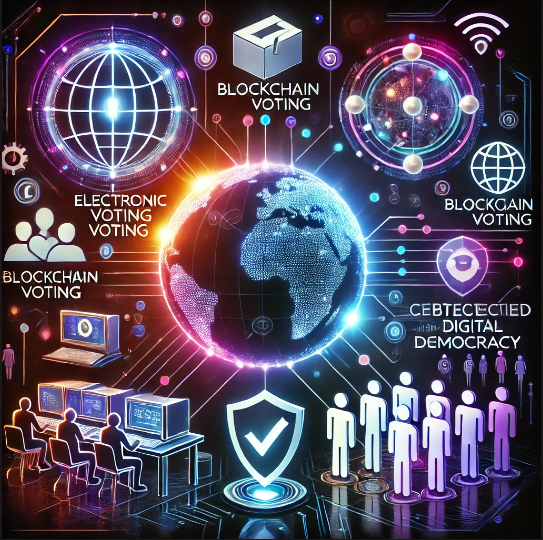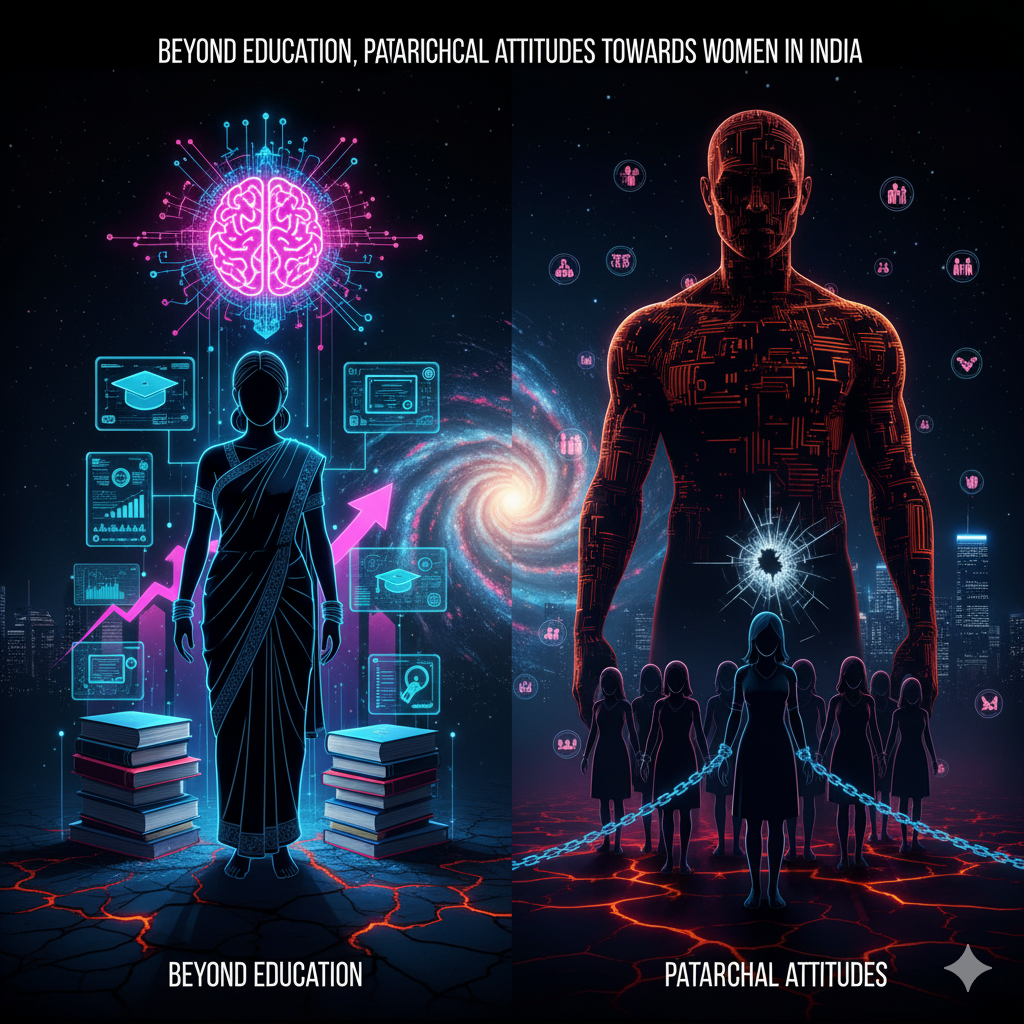Introduction
Democracy, the cornerstone of governance in many nations, thrives on the active participation of citizens, transparency, and accountability. In the digital era, technology has emerged as a powerful tool in strengthening democratic institutions and processes. From enhancing electoral transparency to enabling civic engagement, digital advancements have redefined the way democratic societies function. However, while technology has unlocked unprecedented opportunities, it also poses challenges such as misinformation, cybersecurity threats, and digital divide issues. This essay explores how technology contributes to strengthening democracy, the associated challenges, and the way forward.
1. The Role of Technology in Strengthening Democracy
1.1 Enhancing Electoral Processes and Transparency
Elections form the bedrock of democracy, ensuring that the will of the people is represented in governance. Technology has played a critical role in enhancing electoral processes through:
- Electronic Voting Machines (EVMs): Used in many countries, EVMs reduce the time taken for vote counting, minimize errors, and eliminate issues related to ballot paper tampering.
- Blockchain in Voting: Emerging as a secure method, blockchain technology ensures transparency, traceability, and immutability of votes, reducing electoral fraud.
- Online Voter Registration and Digital ID: Many democracies have implemented online voter registration systems, reducing errors and increasing accessibility. Digital identification systems ensure secure and reliable voter authentication.
1.2 Increasing Citizen Participation and Engagement
Technology has expanded avenues for citizen engagement in governance beyond elections. Some notable contributions include:
- Social Media as a Democratic Tool: Platforms like Twitter, Facebook, and Instagram enable direct communication between governments and citizens, allowing political leaders to share policies and receive real-time feedback.
- E-Governance and Online Public Services: Digital governance platforms facilitate citizen interaction with government bodies, allowing for efficient delivery of services such as tax payments, grievances redressal, and welfare scheme access.
- Petition and Advocacy Platforms: Websites like Change.org and Avaaz empower citizens to advocate for causes, mobilize public opinion, and influence policymaking.
1.3 Promoting Transparency and Accountability
Technology strengthens democratic accountability by exposing corruption, inefficiencies, and human rights violations. Some key innovations include:
- Right to Information (RTI) Portals: Many countries have digitized RTI processes, allowing citizens to request and receive government information easily.
- Open Data Initiatives: Governments worldwide are releasing data on budgets, policies, and spending patterns, allowing citizens to analyze governance effectiveness.
- Digital Media and Investigative Journalism: Independent digital media platforms play a crucial role in uncovering corruption, government inefficiencies, and violations of democratic rights.
1.4 Bridging the Communication Gap Between Governments and Citizens
Democracies function best when governments and citizens maintain open dialogue. Technology enables:
- Virtual Town Halls and Webinars: Political leaders use digital platforms to hold discussions, answer public queries, and explain policies.
- Mobile Governance (m-Governance): Mobile apps provide citizens with instant access to information on government schemes, election updates, and complaint redressal.
- Artificial Intelligence (AI) for Policy Feedback: AI-driven sentiment analysis helps policymakers assess public opinion and tailor policies accordingly.
2. Challenges and Threats Posed by Technology in Democracies
2.1 The Rise of Misinformation and Fake News
One of the most significant threats to democracy in the digital age is the spread of misinformation. Social media algorithms often amplify sensational or misleading content, influencing public opinion. Challenges include:
- Deepfake Technology: AI-generated videos manipulate speeches or actions of public figures, misleading voters.
- Echo Chambers and Polarization: Social media users often engage with content that aligns with their existing beliefs, deepening political divisions.
- Fake News Proliferation: Unverified and misleading news spreads rapidly, sometimes influencing election outcomes.
2.2 Cybersecurity Threats to Democratic Institutions
Digital democracy also faces cyber threats, including:
- Election Hacking: Cyberattacks targeting electoral infrastructure can undermine public trust in the voting process.
- Data Breaches: Personal data of voters, when leaked, can be exploited for political manipulation and targeted propaganda.
- State-Sponsored Cyber Warfare: Countries have been accused of interfering in foreign elections through hacking, disinformation campaigns, and online propaganda.
2.3 Digital Divide and Technological Exclusion
While technology strengthens democracy, not all citizens have equal access. Challenges include:
- Urban-Rural Digital Gap: Rural populations often lack internet access, excluding them from digital democratic participation.
- Socioeconomic Barriers: Low-income groups may lack digital literacy or access to smartphones and the internet.
- Language Barriers: Many online governance platforms primarily function in dominant languages, making access difficult for linguistic minorities.
2.4 Surveillance and Privacy Concerns
Governments and corporations collecting vast amounts of data on citizens pose risks to democratic freedoms. Concerns include:
- Mass Surveillance: Some governments misuse surveillance technologies to monitor political opponents and suppress dissent.
- Loss of Anonymity: Excessive data collection can discourage citizens from freely expressing opinions online.
- Big Tech Monopoly: Private technology companies wield significant power over digital discourse, raising questions about their influence on democracy.
3. The Way Forward: Ensuring a Technology-Driven Yet Secure Democracy
3.1 Strengthening Digital Literacy and Media Awareness
Combatting misinformation and digital exclusion requires education on:
- Fact-Checking Initiatives: Governments and civil societies should promote fact-checking platforms to counter fake news.
- Digital Literacy Programs: Educating citizens about cyber safety, recognizing misinformation, and critical thinking can empower them against manipulation.
- Encouraging Ethical Journalism: Supporting independent media and journalistic ethics can counter the spread of biased and misleading content.
3.2 Enhancing Cybersecurity Measures
Protecting democratic processes from cyber threats requires robust security protocols:
- Securing Electoral Systems: Governments should invest in encrypted voting systems and independent election audits.
- Stronger Data Protection Laws: Enforcing stringent data privacy regulations can prevent unauthorized use of voter information.
- International Cooperation Against Cyber Threats: Countries should collaborate to combat cyber warfare, election interference, and online disinformation campaigns.
3.3 Bridging the Digital Divide
Ensuring equal participation in digital democracy necessitates:
- Expanding Internet Access: Governments should invest in rural connectivity projects and affordable internet services.
- Multi-Language Platforms: Online governance services should be available in multiple regional languages to ensure inclusivity.
- Affordable Digital Devices: Public-private partnerships can help provide low-cost smartphones and computers to economically weaker sections.
3.4 Ethical and Transparent Use of AI in Governance
Governments must use technology responsibly by:
- Ensuring AI Accountability: AI-driven governance tools should be transparent, unbiased, and open to public scrutiny.
- Regulating Big Tech Influence: Governments should establish checks on the power of major tech companies in political discourse.
- Protecting Privacy Rights: Strict data protection laws should be enforced to safeguard citizens’ rights to online privacy.
Conclusion
Technology has become an indispensable force in shaping modern democracies. From streamlining electoral processes and enhancing transparency to increasing citizen participation, digital advancements have revolutionized governance. However, challenges such as misinformation, cybersecurity threats, digital exclusion, and privacy concerns pose significant risks.
To maximize the benefits of technology in democracy, governments, civil society, and technology companies must work together to implement robust regulations, promote digital literacy, enhance cybersecurity, and bridge the digital divide. With responsible and ethical use of technology, democracy can be strengthened, ensuring greater participation, transparency, and accountability in governance.
In the coming years, the intersection of technology and democracy will continue to evolve, making it imperative to strike a balance between innovation and safeguarding democratic values.




